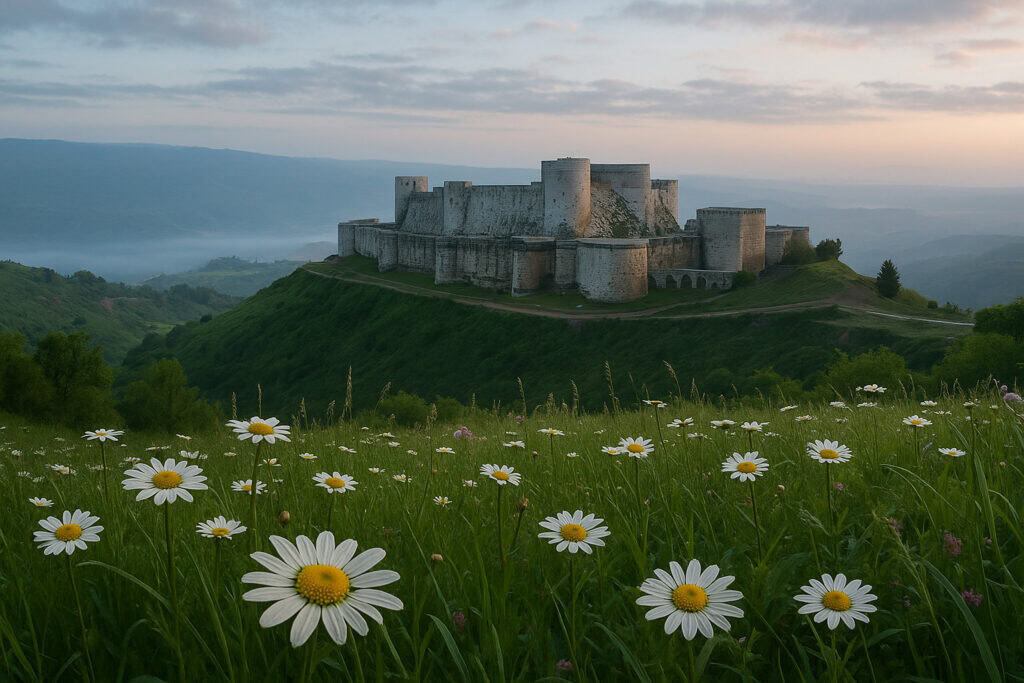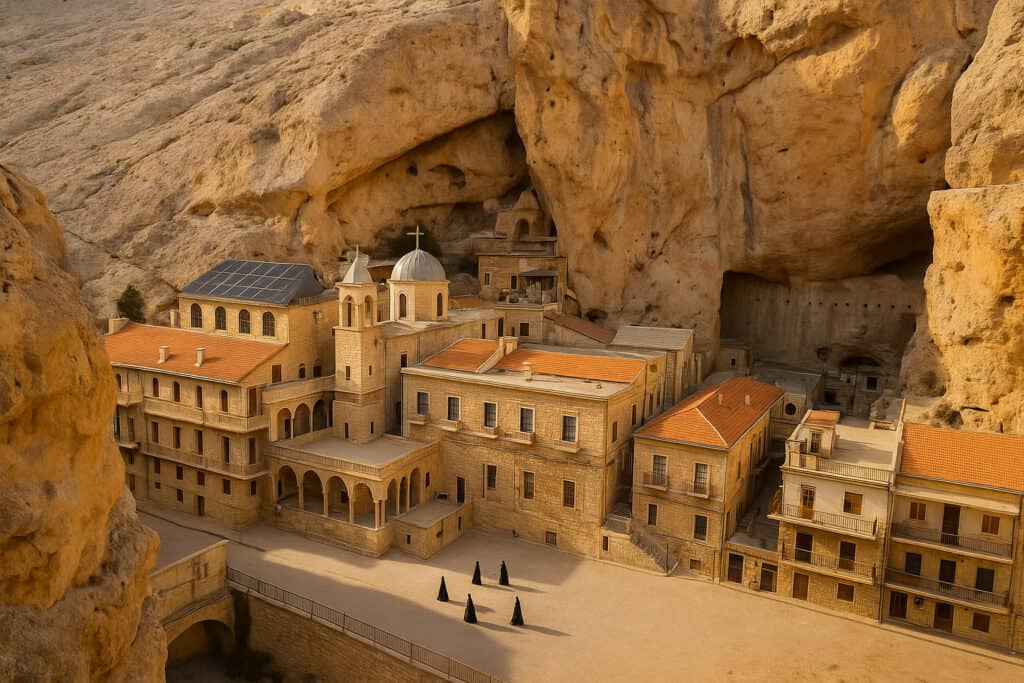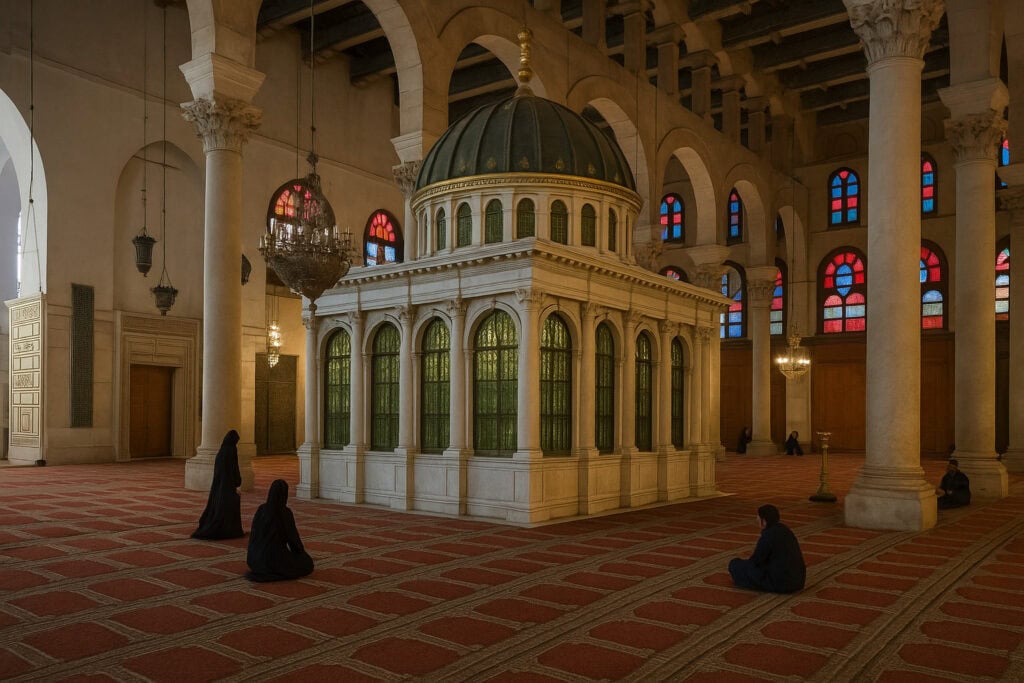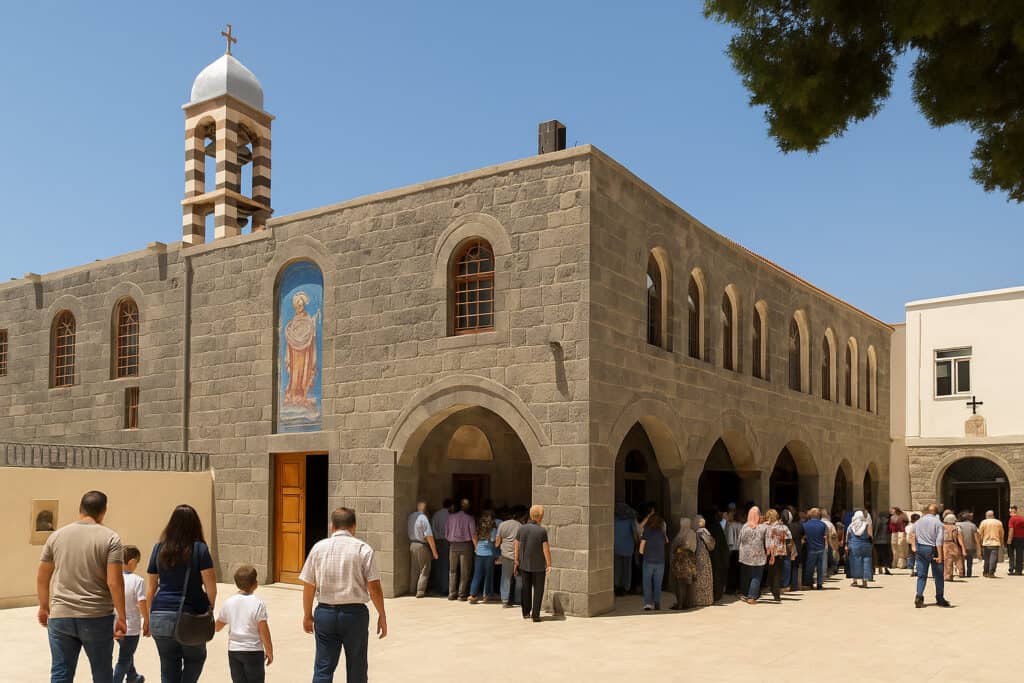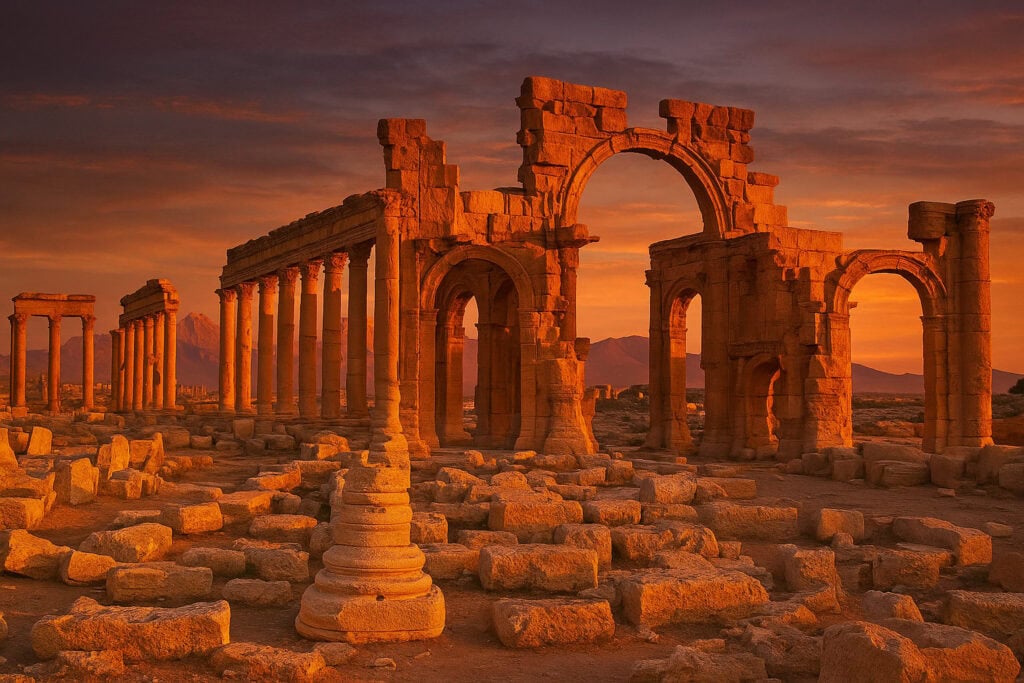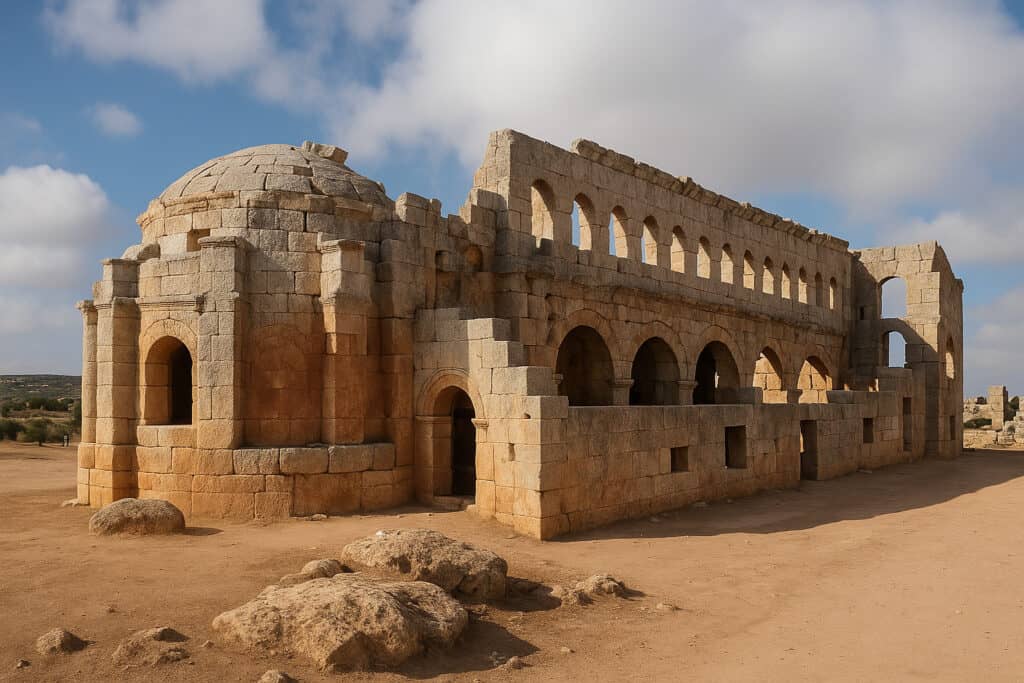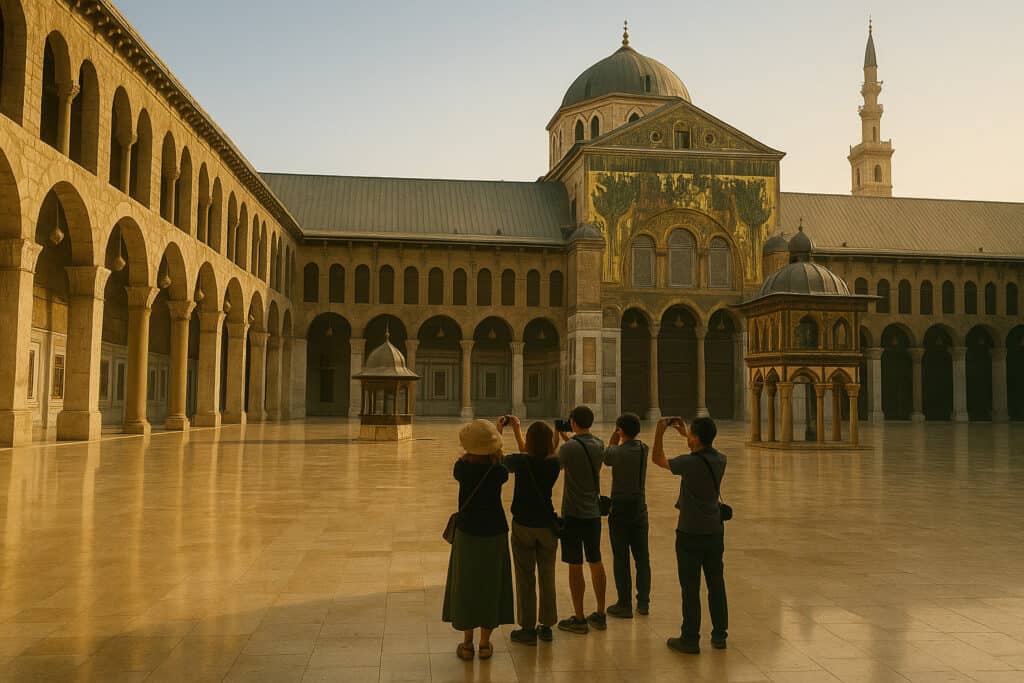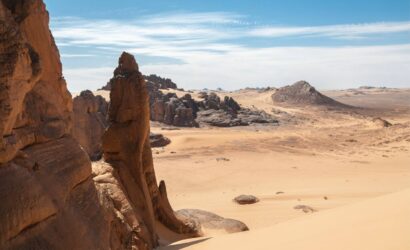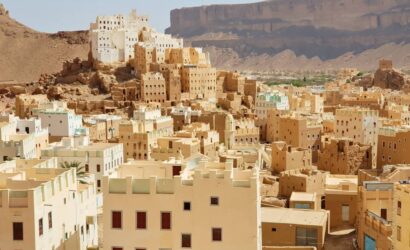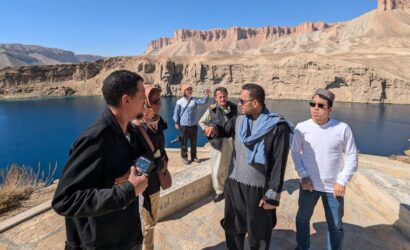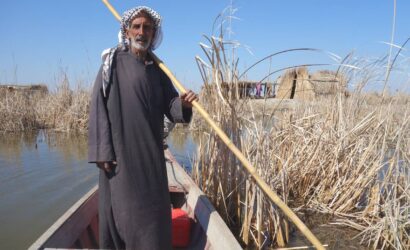An overland journey through Syria’s religious heartlands and archaeological cores, linking Old Cities, Crusader castles, and desert ruins in one loop.
This 8-day tour explores Syria’s most iconic historical cities and religious sites, with a focus on ancient architecture, Christian and Islamic heritage, and Roman and Crusader-era landmarks. The route includes Damascus, Maaloula, Aleppo, Krak des Chevaliers, and Palmyra, offering a structured view of Syria’s layered past.
⭐ Top 5 Highlights of the Tour:
- Discover Hama’s medieval norias and city mosque along the Orontes River.
- Visit Um Al-Zenar Church in Homs, said to house a relic of the Virgin Mary.
- Tour Palmyra’s desert ruins and gain insight into Roman desert frontier life.
- Explore key religious and architectural sites from Qasioun to Qalb Lozeh.
- Blend Christian, Islamic, and pre-Islamic histories in every region visited.
Itinerary:
- Day 1 » 7am Beirut Morning pick-up » 9am Syrian Border » 11am Hotel check-in » 12pm Damascus (National Museum, Takiyya Suleimaniah Souq, Damascus Citadel, Mount Qasioun Viewpoint)
- Day 2 » Damascus (St Ananias Chapel, Church St.Paul, Zaitoun Church, Maktab Anbar, Khan Assad Basha Caravanserai, Al Azem Palace, Umayyad Mosque, Saladin Mausoleum, Sayyidah Ruqayya Shrine, Al-Hamidiyeh Souq)
- Day 3 » Damascus » Saidnaya Monastery » Maaloula (Church of Saints Sergios and Bacchos, Eastern Gorge hike, Saint Thecla Convent) » Mar Musa Monastery » Homs
- Day 4 » Homs (Um Al Zenar Church) » Hama (Al Jamea Alkabir, Saint George Cathedral, Norias) » Idlib (brief coffee and city center walk) » Aleppo
- Day 5 » Aleppo » Church of Qalb Lozeh » Aleppo (Khan Silk Souq, Old City, Aleppo Citadel, Armenian Forty Martyrs Cathedral, Soap Factory)
- Day 6 » Aleppo » Apamea ancient city » Krak des Chevaliers Castle » Al-Mishtaya
- Day 7 » Al-Mishtaya » Palmyra Ancient City » Damascus
- Day 8 » 8am Damascus departure » 9am Syrian Border » 12pm Beirut Drop-off
9-day Syria Tour With Krak, Aleppo And Palmyra
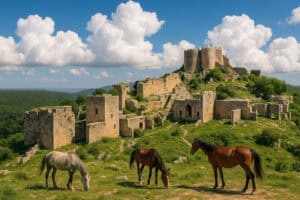
9-Day Syria Tour from Beirut Lebanon + English speaking guide + Airport-hotel pick up drop off + Tourist VISA reference number + Easy border crossing.
Product SKU: SYR9/BEY/BEY
Product Brand: RJ Travel - Tour Operator
Product Currency: USD
Product Price: 1674
Product In-Stock: InStock
5
-
Beirut
-
Beirut
-
3-star hotels
-
SUV or Car
-
Included
-
Damascus, Palmyra, Aleppo, Krak des Chevaliers, Maaloula, Mar Musa Monastery, Hama, Latakia, Salah ad-Din citadel, Apamea, Marqab castle, Homs, Bosra
-
Included
8-day Syria itinerary
You’ll be picked up in Beirut around 7:00 am and driven to the Syrian border, completing the border formalities by around 9:00 am. By 11:00 am, you'll arrive in Damascus and check into your hotel before heading out to begin the day's visits.
The first stop is the National Museum of Damascus, founded in 1919 and holding artifacts from every era of Syrian history, including Ugaritic tablets and Roman mosaics. Next, you’ll walk through the Takiyya Suleimaniah Souq, built in the 16th century under Ottoman rule. You'll then visit the Damascus Citadel, a large medieval fortress with origins in the 11th century, expanded under the Ayyubids and Ottomans. The day ends with a panoramic drive up Mount Qasioun for a full view of the capital.
This afternoon gives context to how ancient and modern layers coexist in Damascus.
Travel Distance & Time: Approx. 120 km – 3 hours drive (including border procedures)
Historical Context:
- Damascus Citadel: Originally built in the 11th century by the Seljuks, heavily modified by Saladin's successors.
- Takiyya Suleimaniah: Commissioned by Sultan Suleiman the Magnificent in the 1550s.
Curiosities & Local Facts:
- Mount Qasioun is associated with early Islamic traditions and offers a view over all of Damascus.
- The National Museum’s entrance once included the restored facade of an 8th-century Umayyad palace from Qasr al-Hayr al-Gharbi.
5 Key Highlights:
- Entry into Syria via land border crossing
- Visit to the Damascus National Museum
- Walk through the Ottoman Takiyya Souq
- Fortress walls of Damascus Citadel
- Sunset viewpoint from Mount Qasioun
Important for you:
Ottoman souq architecture, Damascus fortress, Qasioun viewpoint
Today begins with visits to key Christian sites in the old city of Damascus. You’ll start at the Chapel of Saint Ananias, a 1st-century underground structure linked to early Christian conversion stories. Nearby is the Church of St. Paul, marking the spot where Paul escaped through the city wall.
Next, visit the 17th-century Zaitoun Church before continuing to Maktab Anbar, a 19th-century Damascene house turned cultural center. The tour continues through the historic Al-Hamidiyeh Souq to reach the grand Khan Assad Basha, an 18th-century caravanserai. From there, walk to the Al Azem Palace, once a governor’s residence during the Ottoman era. The centerpiece of the day is the Umayyad Mosque, completed in 715 CE on the site of a Roman temple and Byzantine church, followed by the adjacent Mausoleum of Saladin. Finally, visit the Sayyidah Ruqayya Shrine, an important Shia pilgrimage site.
This visit helps you see how history, religion, and daily life connect here.
Travel Distance & Time: Local walking tour – minimal driving
Historical Context:
- Umayyad Mosque: Built by Caliph Al-Walid I in 715 CE on the site of the former Church of John the Baptist.
- Khan Assad Basha: Constructed in 1751 under the Ottoman governor of Damascus.
Curiosities & Local Facts:
- The Al Azem Palace showcases classic Damascene architectural features like iwan courtyards.
- Sayyidah Ruqayya Shrine features modern Iranian-influenced tilework, a contrast to older Syrian styles.
5 Key Highlights:
- Underground visit to Saint Ananias Chapel
- View of ancient city walls at the Church of St. Paul
- 18th-century caravanserai in the old souq
- Architectural details in Al Azem Palace
- Grand prayer hall of the Umayyad Mosque
Important for you:
Umayyad religious architecture, Damascene house, early Christian Damascus
Departing Damascus early, you'll reach Saidnaya in under an hour to visit the Convent of Our Lady of Saidnaya, one of the oldest Christian monasteries still in use, founded in the 6th century by Byzantine Emperor Justinian.
From there, continue to Maaloula, where Aramaic is still spoken. Visit the Church of Saints Sergios and Bacchos, dating to the 4th century, then walk through the narrow Eastern Gorge associated with the flight of Saint Thecla. Your final visit here is the Greek Orthodox Convent of Saint Thecla. In the afternoon, head to the remote Monastery of Mar Musa, founded in the 6th century and rebuilt in the 11th. The frescoes here date from the 12th century and reflect a blend of Eastern and Western Christian art. Continue to Homs for overnight.
You’ll walk through places that still carry the marks of past empires.
Travel Distance & Time: Approx. 190 km – 4 hours drive
Historical Context:
- Maaloula churches: Among the oldest Christian sites in the Levant, surviving invasions and earthquakes.
- Mar Musa Monastery: Abandoned for centuries, revived in the 1980s by a Jesuit priest.
Curiosities & Local Facts:
- Aramaic liturgies are still performed in Maaloula churches.
- The Saidnaya icon of the Virgin is considered miraculous and draws pilgrims.
5 Key Highlights:
- Visit to Saidnaya’s active monastery
- Aramaic-speaking community of Maaloula
- Hike through Saint Thecla’s Gorge
- Remote mountain setting of Mar Musa
- Fresco viewing in ancient chapels
Important for you:
Byzantine monastery Syria, Aramaic-speaking village, Christian pilgrimage Levant
After breakfast in Homs, you’ll visit the Church of Um Al-Zenar (Mother of the Belt), a 1st-century church believed to house part of the Virgin Mary’s belt. Departing Homs, you’ll drive to Hama, where the visit begins at the Great Mosque (Al Jamea Al Kabir), dating to the Umayyad period, then continue to Saint George Cathedral. Walk along the Orontes River to see the famous medieval norias (waterwheels), some dating back to the Ayyubid era.
In the afternoon, continue northward toward Idlib, where a brief coffee stop and short city center walk offers a chance to observe modern Syrian life. Afterward, the journey continues directly to Aleppo, arriving by evening for check-in at the hotel.
This day introduces rural and urban contrasts that shaped Syria’s historical regions.
Travel Distance & Time: Approx. 260 km – 4.5 hours drive
Historical Context:
- Um Al-Zenar: One of the oldest churches in continuous use in Syria, dating to early Christianity.
- Norias of Hama: Originally built in the Byzantine era, reconstructed during the 13th century to irrigate farmland.
Curiosities & Local Facts:
- The largest surviving norias are over 20 meters tall and powered entirely by the Orontes River’s flow.
- Idlib once housed thousands of artifacts from nearby Ebla—now stored in protective locations due to conflict.
5 Key Highlights:
- Early Christian relic at Um Al-Zenar Church
- Ayyubid-era waterwheels of Hama
- Mosque and cathedral visits in Hama
- Brief city walk in Idlib
- Evening arrival in Aleppo
Important for you:
norias of Hama, Orontes River, Christian site Homs
Your day begins with a drive westward to the Church of Qalb Lozeh, one of the best-preserved Byzantine churches in the Levant, built around 460 CE. Its twin-tower facade influenced early Romanesque architecture in Europe. After exploring the Dead Cities area briefly, return to Aleppo for a full afternoon visit.
Start with the Khan al-Saboun (Soap Khan) to see traditional soap production methods, then walk through the Old City, one of the oldest continuously inhabited centers in the world. Visit the Armenian Forty Martyrs Cathedral, built in 1429, and then continue to the Aleppo Citadel, a massive fortification in use since the 3rd millennium BCE, with most of its structure dating to the Ayyubid and Mamluk periods. Finally, visit the covered Khan Silk Souq, reconstructed after recent damage.
This stop gives context to how ancient trade shaped the region.
Travel Distance & Time: Approx. 80 km – 2 hours drive total (round-trip)
Historical Context:
- Qalb Lozeh: Built during Byzantine Emperor Leo I’s reign.
- Aleppo Citadel: Expanded heavily by Saladin’s successors in the 12th–13th centuries.
Curiosities & Local Facts:
- The soap produced in Aleppo is based on laurel oil and olive oil, with recipes dating back to the 8th century.
- The Silk Khan was a central hub on the east-west trade route toward Persia and Anatolia.
5 Key Highlights:
- Visit to a rare pre-Islamic Byzantine church
- Local soap-making demonstration
- Walk through the restored Silk Souq
- Citadel of Aleppo exploration
- Armenian church in Old Aleppo
Important for you:
Dead Cities Syria, Aleppo soap production, Byzantine basilica
After leaving Aleppo, head south toward Apamea, one of the great Hellenistic cities of Syria, founded in the 3rd century BCE under Seleucid King Seleucus I. The site is known for its monumental Roman colonnaded street, over 2 km long.
After exploring Apamea’s expansive ruins and the nearby mosaics museum, continue to Krak des Chevaliers, a Crusader castle regarded as one of the best-preserved medieval fortresses in the world. Built and expanded by the Knights Hospitaller from 1142 onward, the fortress features Gothic halls, defensive towers, and internal cisterns. By evening, you’ll reach the Christian village of Al-Mishtaya for overnight.
The day connects Roman urbanism with medieval military strategy.
Travel Distance & Time: Approx. 310 km – 5.5 hours drive
Historical Context:
- Apamea: Once housed 500,000 residents; destroyed by Persian and later Arab invasions.
- Krak des Chevaliers: Occupied by Crusaders for over 130 years; taken by Mamluk Sultan Baibars in 1271.
Curiosities & Local Facts:
- The castle’s name comes from the Arabic “Hisn al-Akrad” (Fort of the Kurds).
- Apamea’s street originally led to a massive agora and several temples, most lost to earthquakes.
5 Key Highlights:
- Roman ruins and street in Apamea
- On-site mosaics and bath complexes
- Full walk-through of Krak des Chevaliers
- Crusader-era chapel and towers
- Overnight in Al-Mishtaya’s hilltop setting
Important for you:
Krak des Chevaliers, Roman Syria ruins, Seleucid city
Depart early from Al-Mishtaya to reach Palmyra by midday. Known in antiquity as Tadmor, Palmyra was a caravan city of immense wealth during the 1st to 3rd centuries CE. The site includes the Temple of Bel, the colonnaded street, funerary towers, and the amphitheater.
Walk through the expansive ruins, heavily damaged but still retaining structural outlines of its major landmarks. Highlights include the tetrapylon, the agora, and the remnants of Zenobia’s palace. In the late afternoon, begin the long return drive to Damascus, arriving by evening.
This visit brings direct insight into the scale of Roman influence in the Syrian desert.
Travel Distance & Time: Approx. 330 km – 6 hours drive
Historical Context:
- Palmyra: Rose to prominence under Roman rule; Queen Zenobia led a revolt against Rome in 270 CE.
- Temple of Bel: Dedicated in 32 CE, destroyed in 2015 and partially reconstructed.
Curiosities & Local Facts:
- Palmyra’s architecture blends Greco-Roman, Persian, and local Semitic styles.
- The colonnade once connected temples, baths, and marketplaces over 1 km.
5 Key Highlights:
- Full archaeological walk in Palmyra
- Roman amphitheater and marketplace
- Remnants of the Temple of Bel
- Desert landscapes around Tadmor
- Evening arrival in Damascus
Important for you:
Queen Zenobia, Palmyra colonnade, Roman desert city
Check out after breakfast and depart Damascus at 8:00 am. You’ll reach the Syrian border by 9:00 am for exit procedures, then continue back to Beirut, arriving around noon.
This day concludes the journey through Syria’s cultural and historical heartlands.
Travel Distance & Time: Approx. 120 km – 3 hours drive (including border procedures)
5 Key Highlights:
- Departure from Damascus
- Border crossing into Lebanon
- Final road views of Syrian countryside
- Return to Beirut
- End of services
Important for you:
Syrian–Lebanese border, road to Beirut, exit logistics

